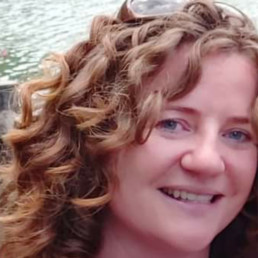
Written by Jess Gosling
An experienced international Early Years teacher, blogger and writer. She is currently writing a book for international teachers, 'Becoming an International Teacher'.
I am currently in my seventh year as an international teacher. My students, in the majority, are wealthy Taiwanese. In order to support their learning, I have researched my students’ socio-cultural experiences and their funds of knowledge. Funds of knowledge represent the bodies of knowledge they come to school with: including the information, skills, and strategies which underlie household functioning, development, and well-being (Hedges et al. 189). From these understandings, I know their experiences of diversity and inclusion are quite narrow. Therefore, my process of embedding these concepts begins early, at the start of the academic year. I present my class with ideas of inclusion in a way they understand and that is relevant to them. My starting points allow them to think beyond their own experiences and understandings.
Tackling gender roles
Stories help support concepts of fluid gender roles. From when I very first introduced ‘acting’ our class stories, I emphasized that a name was just a name or label. As there was no gender attached, a boy or a girl could represent a name. So, for example, when the story had a character named Daisy, I would ask ‘Who wants to be Daisy today?’ There were only one or two quizzical looks about this concept initially but now, due to frequent exposure, there is a total acceptance. I feel this is one way in which I can demonstrate how we do not need to be defined by a gender. Addressing these perceptions, rather than attempting to side-step them, is the way forward to transforming ideas.
Discussing cultural differences
When texts are selected carefully, they are able to illustrate a diverse representation of cultures. However, it is important these stories show children following both culturally ‘different’ activities as well as living ‘standard’, everyday lives, similar to the children. Following a book share, we discuss any perceived differences and similarities, encouraging questions. One carefully selected story was ‘Amazing Grace’. This text is about a little girl who wanted to be Peter Pan in a school show. But the fact she was black and a girl was highlighted by her peers, who were unkind to her and told her she could not be Peter Pan. My students were shocked by the peers, explaining that Grace was the best actor for the job. This story was particularly relatable to my children as they understood this concept well as we act in our own shows. I also highlight my own difference, as a fair-skinned person in Asia. I explained how often I am stared at, or my freckles commented upon. I revealed my feelings of sadness and how I do not like people to point out my differences.
Addressing disabilities
I led an assembly where I showed a ‘Sesame Street’ clip featuring a girl with Downs Syndrome. We talked about how she looked and spoke a little differently. The children hadn’t initially mentioned this, as they were more focused on what she had to say (or perhaps watching the ‘big screen’!) I raised the question; how would you feel if people always saw you as different? The children replied that she was just a girl. I said people may point out how she looks and sounds different and they were a little bit surprised by that. I think maybe they hadn’t come across it. By raising awareness of this, my intent was that they start to build upon concepts of ‘right’ reactions in these situations.
Expressing viewpoints
Our class has its foundations rooted in kindness. We allow for differences with our friends and identify how we have different likes and dislikes. I follow their questioning and views. Young children are very curious, discussing these ‘big’ concepts in a safe place is vital. Further, the children know that all ideas are appreciated. This is particularly the case if they express a contrary viewpoint. One example was when we viewed a photo of an African hut. A little girl responded to the photo saying ‘…ooh that looks so dirty’. As a class, we picked the idea apart. We did not judge or reprimand her for this comment but instead we explored her perception and reasons why a house may be built in that way. You can really help support a mindset change through calm discussion. I don’t believe in making children feel guilty for opinion, as they have developed these from socio-cultural experiences and from adults around them. The adult world does not give young children enough credit for how intelligent they are and how much they perceive and listen to others. We, as educators, need to treat them as the capable individuals they are, capable of a growth mindset. Yet, concepts of inclusion and diversity must be revisited constantly to embed the notion of equality for all.
References:
Helen Hedges, Joy Cullen, Barbara Jordan “Early years curriculum: Funds of knowledge as a conceptual framework for children’s interests,” Journal of Curriculum Studies 43, no. 2 (2011): 185–205, https://doi.org/10.1080/00220272.2010.511275.
Sesame Street “What Makes You Special?” 21st February 2015. 1.54-1.20 https://www.youtube.com/watch?v=LrPm7BasRBo

